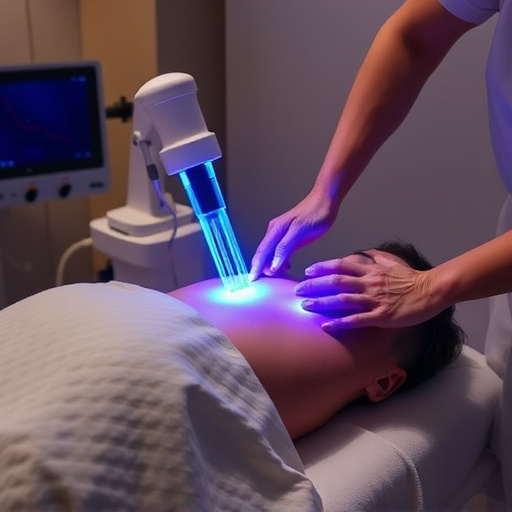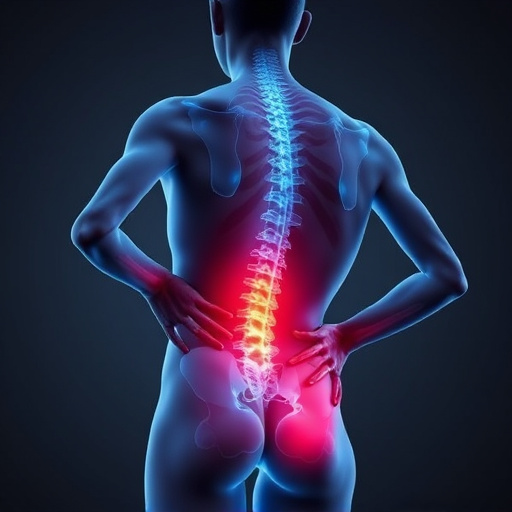Shockwave tendonitis relief gains popularity as a non-invasive treatment for active individuals suffering from tendon inflammation and irritation caused by repetitive stress or impacts. Symptoms range from mild to severe pain near joints, and risk factors include excessive activity, improper training, and structural issues. Relief involves RICE, rehab, and chiropractic care. Shockwave therapy, leveraging micro-trauma to stimulate tissue repair, offers faster recovery and enhanced mobility compared to traditional treatments like corticosteroids or surgery, making it a growing key in post-injury care and chronic pain management.
Shockwave tendonitis relief is gaining popularity as a non-invasive treatment option for individuals suffering from this painful condition. This innovative approach, using low-energy shockwaves, offers a promising alternative to traditional methods. In this article, we’ll explore the world of shockwave therapy, delving into its understanding, benefits, and real-life success stories. By shedding light on how it works and why it’s becoming a preferred choice, we aim to empower individuals seeking relief from tendonitis symptoms.
- Understanding Shockwave Tendonitis: Causes and Symptoms
- Non-Invasive Treatment: The Rise of Shockwave Therapy
- Benefits and Success Stories: Why It's Gaining Traction
Understanding Shockwave Tendonitis: Causes and Symptoms

Shockwave tendonitis is a growing concern among healthcare professionals due to its increasing prevalence in today’s active population. It involves inflammation and irritation of tendons, often caused by repetitive stress or sudden impacts. This condition is characterized by sharp pain, tenderness, and stiffness around the affected area, typically near joints like the elbows, shoulders, or knees. The symptoms can range from mild discomfort to severe pain that interferes with daily activities and mobility.
The primary factors contributing to shockwave tendonitis include excessive physical activity, improper training techniques, repetitive tasks, and underlying structural issues. For instance, athletes engaging in high-impact sports are at a higher risk due to the constant strain on their tendons. Additionally, occupations involving manual labor or repetitive movements can lead to the development of this condition. Effective shockwave tendonitis relief involves a combination of rest, ice therapy, compression, and elevation (RICE), along with specialized treatments like rehab services and chiropractic care to alleviate pain and promote healing.
Non-Invasive Treatment: The Rise of Shockwave Therapy

In the realm of sports medicine and post-injury care, a non-invasive treatment approach is gaining significant traction—shockwave tendonitis relief. This innovative method has become a game-changer for athletes and individuals suffering from tendon-related ailments. By utilizing shockwaves, a technology once confined to specialized settings, therapists can now offer effective pain management and healing for tendinopathy without the need for surgery or extensive physical therapy.
The rise of shockwave therapy as a non-invasive treatment option is largely attributed to its ability to stimulate tissue repair and promote regeneration. Shockwaves create micro-trauma in the damaged tendon, initiating a healing response that enhances blood flow and encourages the growth of new, healthy tissue. This approach offers a promising alternative for those seeking relief from chronic tendinitis, providing faster recovery times and improved mobility compared to traditional physical therapy methods. As more individuals embrace this modern treatment, shockwave tendonitis relief is poised to become a cornerstone in comprehensive post-injury care regimens.
Benefits and Success Stories: Why It's Gaining Traction

Shockwave tendonitis relief is gaining popularity due to its proven benefits and success stories in treating chronic pain. This innovative non-invasive therapy uses focused shockwaves to stimulate natural healing processes in the body, offering a promising alternative to traditional treatments like corticosteroids or surgery. Many patients have reported significant improvements in their condition after undergoing shockwave therapy, experiencing reduced inflammation, enhanced muscle recovery, and chronic pain relief.
The effectiveness of shockwave tendonitis relief lies in its ability to reach deep into affected tissues, promoting angiogenesis (the growth of new blood vessels) and stimulating fibroblasts, the cells responsible for collagen production. This leads to faster tissue repair and regeneration, making it an ideal solution for athletes, active individuals, and those suffering from chronic tendonitis who seek natural and lasting relief without the side effects associated with other treatments.
Shockwave tendonitis relief is no longer a niche topic in medicine, thanks to its growing popularity and proven benefits. As more people seek non-invasive treatments for this painful condition, shockwave therapy emerges as a game-changer. Its ability to offer significant relief without the need for surgery or prolonged recovery makes it an attractive option for those suffering from shockwave tendonitis. With success stories across various demographics, it’s clear that shockwave therapy is revolutionizing the way we approach tendon-related injuries, providing a promising path to pain-free living.














